Hitch & Wiring Info
Trailer Life compiles annual factory tow ratings for trucks, sport-utility vehicles, vans and automobiles. Here is the link to that information: http://www.trailerlife.com/output.cfm?id=42175
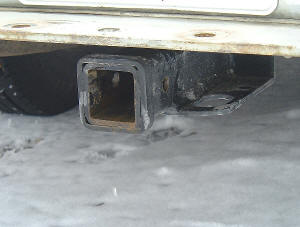 |
This is the 2” receiver portion of the hitch which bolts on to the frame of your tow vehicle. The hitch head slides into this receiver and there is a pull pin and safety pin which secures it to the hitch. |
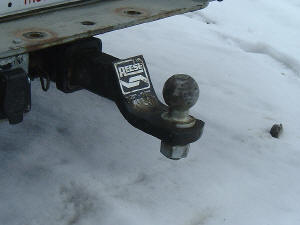 |
This is a utility head ball mount which slides into the 2” receiver. This would be used when towing a smaller or rather light weight trailer. They are typically rated for 500# hitch weight and 5000# total weight. There is no weight distribution when using this type of ball mount. These are available in different drops or rises so that you can obtain the correct hitch ball height for your trailer. |
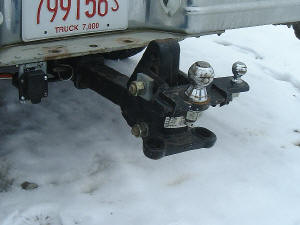 |
This is an adjustable hitch head for a weight distributing hitch. The hitch ball height can be adjusted by a series of different holes in the bar. The angle of the hitch head can also be adjusted to provide more lift or weight distribution. The small ball to the right is for a friction type sway control. |
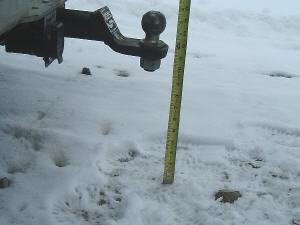 |
This shows a utility head ball mount with a 14-1/2” hitch ball height. The hitch ball height is measured from the ground to the top of the ball when the unit is parked on a level surface. |
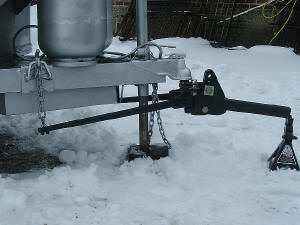 |
This shows a standard weight distributing hitch with 750# trunnion style (square) bars along with the adjustable hitch head. I like the trunnion style (square) bars much better than the round bars. There are 550#, 750# and 1000# kits available. I would recommend the 750# or 1000# bars based on your trailer weight. This set up would distribute the hitch weight of the trailer evenly to the frame of the tow vehicle so that the rear of your tow vehicle will not squat from the additional weight of the trailer. The weight distributing hitch will help somewhat to prevent sway while towing but there are additional sway control devices which can be added to this set up. |
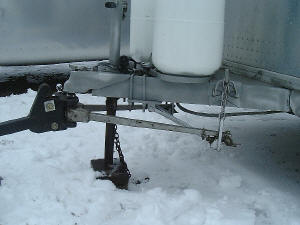 |
This shows a weight distributing hitch with trunnion style bars, the adjustable hitch head and a dual cam sway control system. This is exactly the same as the standard weight distributing hitch but the dual cam sway control has been added to it. This type of dual cam sway control can be added with trunnion style (square) bars only. The round type weight distributing bars will not work with the dual cam sway control. This type of sway control will work fine with any size trailer large or small. The dual cam sway control is somewhat noisy when turning but it does a fine job of controlling sway. |
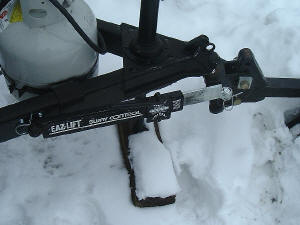 |
This is a photo of a friction type sway control. This type of sway control can be used with or without weight distributing bars. This type of sway control will work fine on trailers 24’ or shorter or 2 of these units can be used for 25’ and larger trailers. This minimizes sway caused from passing trucks or sudden wind gusts. Double friction disc brake principle provides constant sway abatement. |
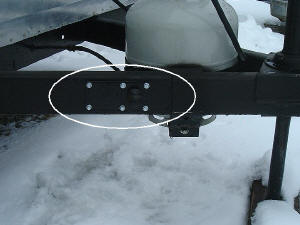 |
This show the small ball set up which bolts on the trailer A-frame for use with a friction sway control. |
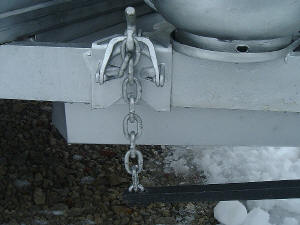 |
This shows the snap-up bracket which attaches to the A-frame of the trailer for the weight distributing type hitch set up. |
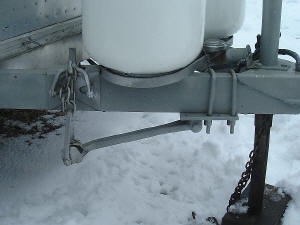 |
This shot shows the A-frame of the trailer with the dual cam sway control and the snap-up bracket attached. |
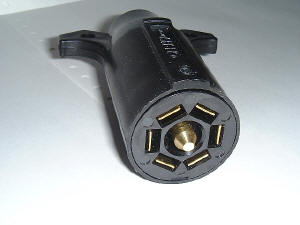 |
This is today's standard 7 way trailer end plug. 95% of the new trailers manufactured today use this plug. Most of the units we get in have this plug on them.
These plugs are made by both Bargman and Pollak but are interchangeable. |
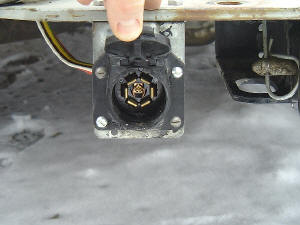 |
This is today's standard 7 way car end plug. This is more than likely the plug you will need to have on your tow vehicle if purchasing a trailer from us. There is a standard wiring diagram for this plug which we always follow. Again, this may be a Bargman or Pollak brand plug. |
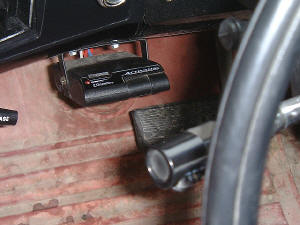 |
This is the electronic brake control which mounts under the dash of your tow vehicle. There are many different brands of these on the market and most of them do a fine job. If the trailer you are purchasing has electric brakes, you will need to have one of these added to your tow vehicle along with the car end plug before you arrive to pick up your unit.
This unit automatically applies your trailer brakes when you hit the brakes on your tow vehicle or you can manually apply the trailer brakes by hand. These are adjustable so that you can control the braking power going to your trailer |


